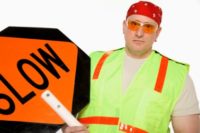Setting the standard
First published in 1999, the voluntary consensus standard, ANSI/ISEA 107-2010, American National Standard for High-Visibility Safety Apparel and Headwear specifies requirements for apparel and headwear that is capable of visually signaling the user’s presence. The standard is recognized and compliance with it is mandated by federal, state and local authorities as well as private industry entities. The U.S. Department of Transportation’s Federal Highway Administration (FHWA) requires nearly all workers in or near a highway right-of-way to wear garments that comply with the standard. The standard is currently under revision and ISEA anticipates that a revised document will be published by the end of 2015. Consensus review of the proposed update is expected to begin in April 2015.
Now is a good time to review the current standard. Here are some frequently asked questions and answers from ISEA.
What is included in the ANSI/ISEA 107 standard?
The standard details the performance specifications for materials used in the construction of high-visibility garments. Specific test procedures are included for background materials, and retroreflective and combined-performance materials. The standard also provides criteria for apparel design and addresses labeling and use instruction requirements.
What do the Performance Classes mean?
Garments are classified as Performance Class 1, 2 or 3 depending on the total area of visible background and retroreflective material. The amount of required visible material increases with each Performance Class. Performance Classes give users a way to specify the most appropriate garment for the use environment and hazard.
Does the standard only permit the exact designs that are provided in its appendix?
No. The designs provided in the appendix of the standard are only examples. There may be other configurations that meet the intent, design requirements, and minimum performance criteria of the standard that may differ from the limited examples in the appendix. The standard does require that certain design aspects be met such as placement of retroreflective material, the width of such material and the amount of material needed to classify a garment in a Performance Class.
Does the ANSI/ISEA 107-2010 standard mandate that garments be third-party certified?
The standard requires that the background material and retroreflective or combined-performance material used in the construction of a finished garment be certified by an accredited, independent third-party laboratory to ensure that the materials meet the specified performance criteria imposed by the standard. The standard includes test reports that are to be used when evaluating the various materials.
The finished item may be evaluated by an accredited, independent third-party or by the manufacturer of the item who attests that the garment is made up of compliant materials, meets the design criteria stated in the standard, and includes the requisite markings and labels. A garment compliance certificate, to be completed and signed by the manufacturer, is included in the standard as well.
For additional information, visit https://www.safetyequipment.org/c/hiviz-faq.cfm#1.




